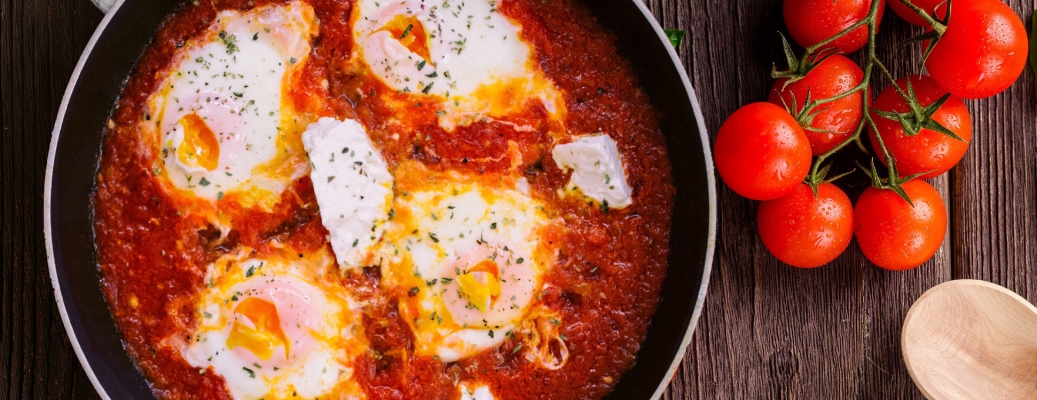Dr. Shakshuka and Professor Sabich
Yehuda is a wonderful man and a wonderful cook. Every day at about 11 a.m. he starts cooking lunch for himself and his three fellow orderlies. Yehuda is the chief orderly at the Geriatric Rehabilitation Building at Sheba Hospital where I volunteer twice a week. Since there is no employee cafeteria in the building, the hospital provides the orderlies with the necessary ingredients to make their own lunch. If you can picture the workspace where flight attendants heat up meals on airplanes, you will have a good idea of our kitchenette - a small stovetop, a bit of counter space, and a shelf for an electric kettle and toaster. The most wonderful aromas waft out from that confined space when Yehuda starts cooking.
"Yehuda, can you teach me how to cook?" I asked him one day. He said that it would be his pleasure and we would start with shakshuka. I ran to get my notepad and pen. Here is what Yehuda instructed: "Pour a little olive oil in a pan. Cut up fresh tomatoes and cook them on a simmer for about ten minutes. You can add cut-up onions and green pepper too. Remember to cover the pan. Then add tomato paste. Cover the pan for another ten minutes. Don't forget to add salt and pepper. Finally crack open eggs on top of the vegetable stew. Add more salt and pepper and cover the pan for another ten minutes."
That evening I made shakshuka at home. For a first-time cook, letting food simmer for such a long time and covering the pan to keep the taste were revelations to me. I also enjoyed adding the salt and pepper. My wife gave me an A for effort and an A-minus for taste and preparation. As a former teacher, I was very pleased with my marks.
When I told Yehuda about my success with shakshuka, he was very pleased too. "Today, Eli, I'll teach you how to make sabich." I had never heard of this. "samich?" I asked. "No, sabich. Every person in the State of Israel knows what sabich is." Well, perhaps that is a true statement now, but it wasn't true when Yehuda told me then. "We start with eggplant. Do you know what eggplant is?" I asked him to please remind me. "You'll also need a strainer and coarse salt." This was beginning to sound like more than I had bargained for. "Cut the eggplant into slices. Put the slices on the strainer in the sink. Cover the slices with coarse salt. Let it stand for half an hour. This will soften the eggplant, remove excess liquid, and make it ready for frying in oil. While you are waiting, prepare some hard boiled eggs, cut up some lettuce and tomatoes and warm up some pitot. Make sure you have hummus and tehina spreads. Fry the eggplant until it browns and you are ready." I understood that sabich is a sandwich in pita, like a falafel but with different ingredients entirely. That evening, after a trip to the supermarket to buy the appropriate groceries, I made sabich. My wife gave me another A for effort, and an A-minus for taste and preparation. I was on a roll, if you'll pardon the pun.
I reported back to Yehuda. My teacher was again very pleased with my progress. "Eli," he asked me, "Have you ever heard of mejadra?"
I would like to thank my cooking teacher, Mr. Yehuda Chayat, for his help in preparing this article. By the way, mejadra is a lentil and rice dish - not a dish for a beginner like me








Comments